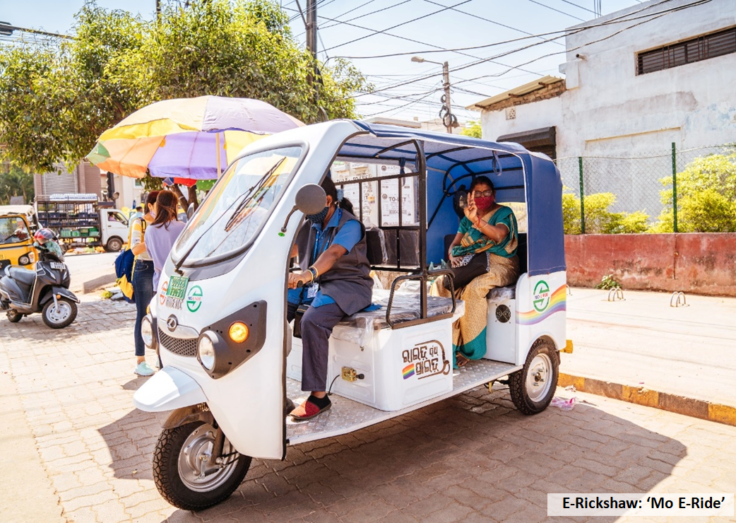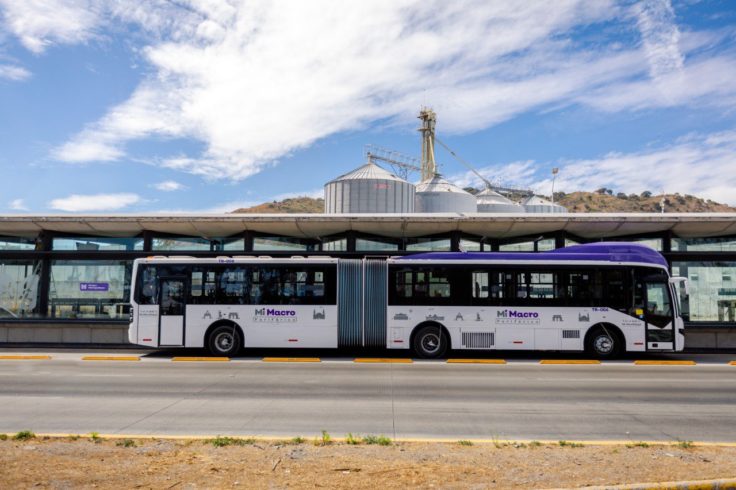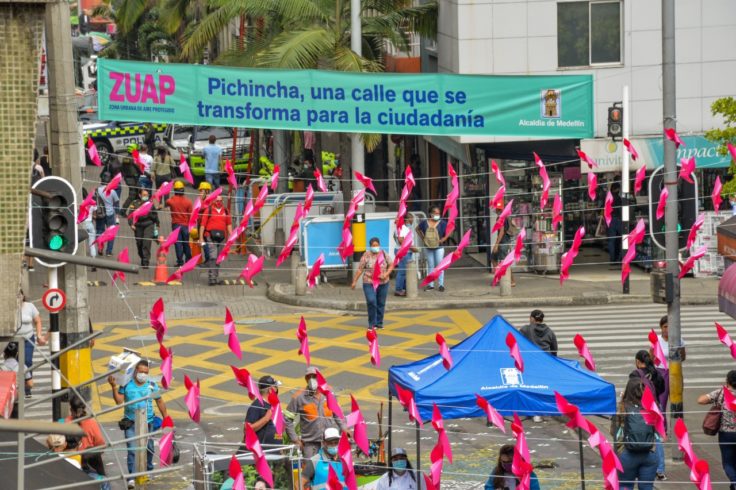December 05, 2022
STA 2023 Finalists: Building More Resilient, Equitable Cities For All
Every year, the Sustainable Transport Award (STA) Nominee Cities are recognized for policies and interventions that promote public transport, walking, cycling, and transit-oriented development in ways that highlight accessibility, equity, and urban innovation.
The STA Committee recognizes the 2023 Nominees for the dynamic ways in which they have approached urban and transport planning.
In 2022, as the world began to recover from the impacts of the COVID-19 pandemic, many cities looked towards strategies and actions to move forward from the crisis and create more economically and socially resilient systems that serve everyone. The 12 Nominees shortlisted for the 2023 STA have all taken steps to create more responsive, forward-thinking solutions to address complex issues of urban mobility, promote sustainable development in the face of climate change, and prioritize the needs of marginalized communities.
Of the dozen Nominees, five top finalists — Bhubaneswar (India), Paris (France), Medellín (Colombia), Cuenca (Ecuador), and the State of Jalisco (Mexico) — were selected for their achievements in implementing mobility interventions over the past year that promote inclusion and resilience within their cultural and political contexts. The STA Committee recognizes these nominees for the dynamic ways in which they have approached urban and transport planning — and their particular focus on bolstering equity and employing lessons learned from the pandemic — while setting examples for other global cities to follow. Read more about the finalists below and highlights of their work.
Bhubaneswar

Bhubaneswar, the capital city of Odisha state in India, has been working to strengthen and modernize its public transport services with a focus on user experience, gender equity, and more integrated transit options. The city began working with private sector partners in 2018 to streamline the operation of its Bus Rapid Transit (BRT) system and integrate it with other essential transport services. This system was rebranded as Capital Region Urban Transport (CRUT), which continues to work towards improving inter-regional and last-mile connectivity for people across the State.
The State has also been working to revitalize its tourism industry and increase public transport ridership following the pandemic by focusing on user needs and by responding to key health and environmental issues, such as air quality and pollution. It has also prioritized updates to its transport infrastructure to make it more accessible and practical for residents and visitors alike. Improvements made to the city’s bus service (Mo Bus) and E-Rickshaw service (Mo E-Ride) help to provide riders with more connected, multi-modal trips that put a spotlight on safety, sustainability, and efficiency.
Bhubaneswar’s Key Interventions
- Enhancing the safety of users, especially women and girls, through security features
- Improving air quality through the introduction of electric vehicles, such as e-rickshaws, for last-mile connectivity to public transport services
- Policies and projects to meaningfully support the decarbonization of the city’s transport sector and enhance quality-of-life
- Capacity building and employment generation for women and transgender people in the transport sector
Cuenca

Cuenca, the capital city of the Azuay Province of Ecuador, has shown a strong commitment to improving its air quality and encouraging residents to shift from private car use towards walking, cycling, and public transport. Cuenca has also focused on improving multi-modal transport options and highlighting sustainability with scalable low emission zone (LEZ) strategies. A proposed LEZ for the city’s Historic District aims to reduce vehicle use in high-traffic areas by limiting driving speeds to 10 km-per-hour and encouraging more road-sharing with pedestrians, bicycles, and electric scooters.
To provide more sustainable mobility options, Cuenca has also tested improvements to its pedestrian and cycling infrastructure with a focus on creating more complete streets and safer roadways. The city implemented 13.5 km of cycling infrastructure as part of its plans for a more extensive 125 km network, and facilitated the commercial operation of the Cuenca Tramway, the country’s first tram system. A broader Electromobility Plan for the city is also in the works that will include an electric bus network that integrates with the Tramway and other key services.
Cuenca’s Key Interventions
- Implementing the first 13.5 km of Cuenca United Cycleway
- Proposals for Historical Center Low in Emissions (CHBE), which incorporates super blocks for reducing driving, lowering emissions, and creating complete streets
- Inclusive design strategies to increase safety and accessibility for persons with disabilities
- Initiating commercial use of the Cuenca Tramway for more efficient mobility, with 27 stations distributed over 21 km
Jalisco

Over the last year, the State of Jalisco in Mexico — encompassing the municipalities of Guadalajara, Zapopan, and Tlaquepaque — has made commitments to a fully-integrated transport system that caters to the last-mile connectivity needs of residents while reducing overall transport emissions. Guadalajara’s BRT system, known as Mi Macro, was improved and modernized in the last year with inclusive policies focused on meeting rider demand. The implementation of Mi Macro Periférico, the city’s second BRT line, in 2022 has expanded daily access to the system to nearly 300,000 people.
In addition to improvements to the Mi Macro system, Jalisco also introduced new initiatives to transform its urban and public spaces. This includes a focus on creating safer, more inclusive streets and roads that give priority to pedestrians and cyclists, while also broadening access to the MiBici bikeshare program in Guadalajara. Jalisco continues to make concerted efforts to focus on the safety and comfort of residents on their daily commutes, while placing the needs of women and girls, persons with disabilities, and low-income communities at the core of new transport policies.
Jalisco’s Key Interventions
- Initiating tree plantation drives for greening public space, which improves air quality and quality-of-life
- Rehabilitating and expanding pedestrian and cyclist walkways across the region
- Implementing the first electric bus route in the region
- Regeneration of urban space by reusing vacant lots and underutilized spaces to build 45 km of well-lit and universal sidewalks
- Designing for the inclusion of marginalized groups and reducing traffic speeds to decrease road accidents
Medellín

The city of Medellín in Colombia, the 2012 winner of the STA, has been working to revitalize urban life through bottom-up approaches to planning and design that engage all types of communities. The transformation of public space with resident input has been integral to improving mobility across Medellín. This includes the development and enhancement of community meeting points, public parks, cycling facilities, and transport systems, such as an integrated cable car system to better connect peripheral neighborhoods with the rest of the metro area.
The city has also committed to taking action on its air quality, with proposals for Protected Air Urban Zones (ZUAP) that seek to reduce emissions from passenger and freight transport in busy areas of the city. In the past year, the city has been focused on increasing awareness amongst residents of its proposals for these Zones, in addition to piloting interventions to demonstrate the benefits of having more cycling, walking, and sustainable transport options.
Medellín’s Key Interventions
- Incorporating electric buses in the city’s BRT system
- Formulating a pilot of cargo bikes to reduce vehicular emissions
- Creating Protected Air Urban Zones in dense urban areas to reduce pollutants and emissions
- Pedestrianizing streets to create a more vibrant, car-free urban environment
- Including a participatory planning process for public projects, such as the identification and development of the Protected Air Urban Zones
Paris

The city of Paris, France previously received the STA in 2008, and has continued to be at the forefront of innovation in transport policy, mobility, and urban design. Over the past year, the city refined the tactical interventions it adopted during the height of the pandemic to make its streets and transport systems more people-oriented. With strong public and political support, the city has notably taken steps to shift away from car-centered neighborhoods in favor of urban spaces that highlight safety, gender inclusivity, and sustainable transport.
The city has continued to focus on creating more permeable green spaces, expanding its network of cycle lanes, and developing more pedestrian zones that prioritize access for children, families, persons with disabilities, and older populations. Paris was the first city in France to implement a Low Emission Zone in 2017 and, over the past year, continued to expand its clean air and emissions reduction strategies to serve more residents. As Paris prepares to host the 2024 Olympic Games, the city is stepping up its efforts to create attractive urban spaces and connected transport services by utilizing low-cost measures that can have the greatest positive impact for residents and visitors alike.
Paris’ Key Interventions
- Converting road spaces around schools into School Streets, which are safe places for movement and recreation for children and families
- Transforming busy arterial roads into pedestrian streets with limited access to motor vehicles
- Creating permanent cycle lanes from temporary ones that were developed in response to demand during the pandemic, while continuing to expand public cycling facilities citywide
- Reclaiming urban and parking areas to use as public space for pedestrians, tree plantations, and recreational activities throughout the city
Stay tuned for more news on the Sustainable Transport Award and for the announcement of the 2023 winner at staward.org.
Read more about the 2022 STA winner Bogotá, Colombia >>
View the Mobilize Virtual Events highlighting the 2022 STA Finalists >>
